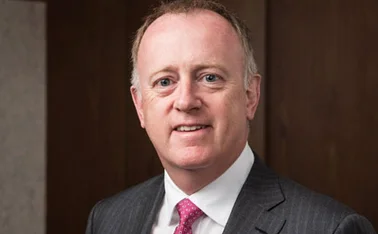
Growing SMEs: Room to manoeuvre
Small businesses are often subject to rapid change and growth, and it is essential that brokers and insurers understand how radically their risk profiles can evolve.

Small and medium-sized enterprises present something of a challenge to the insurance industry. While the nature of an SME's business can change dramatically over the course of a year, the size of its insurance premium often means that only a very light-touch service is appropriate.
To further complicate matters, as these businesses grow, insurance is unlikely to be their top priority.
"Insurance is usually the last thing on their minds," explains Brian Greenfield, senior technical adviser at Swinton Commercial.
"Owners of SMEs are usually focused on the growth of their business. For some, insurance is a grudge purchase, and all they'll be interested in is getting the cheapest premium."
Further, unlike their larger peers, SMEs don't usually have any in-house insurance expertise. Indeed, with operating costs pared to the bone, SME owners can find themselves in charge of a number of high-risk areas including employment, health and safety and corporate governance.
This can make it difficult for them to recognise that they face a new risk or that legislation has changed and they need to adjust their insurance cover.
The commoditisation of SME products does not help either, especially when they are sold online without any advice.
This distribution strategy may be appropriate for the relatively low premiums on SME products, but it doesn't always fit the risk profile of the underlying businesses.
Kevin Pallett, managing director of Aspen Risk Management, explains: "The risks faced by SMEs may not be as complex as those faced by larger companies, but the one-size-fits-all approach doesn't work. Small businesses change rapidly and it's unlikely a commoditised policy will meet their needs."
Another issue arises from the way these policies renew. Andy Holmes, underwriting director at CFC Underwriting, says that simply allowing these policies to auto-renew can create a mismatch between the risk and the insurance.
"Where a continuous policy is in place, the onus is on the SME to tell the insurer if the business has materially changed. But how do they know? You need to have a touch point to enable the insurer and customer to speak to each other," he says.
Evolving companies
These factors make it essential for brokers and insurers to have a good understanding of how the risk profile of SMEs can evolve so that they can support such businesses wherever possible.
There are a number of key business development plans that can trigger a change in an SME's insurance requirements. For starters, taking on more employees can be a major game changer.
"As a business grows there are lots of issues around hiring and firing. This makes employment practice liability insurance essential," says Neil McCarthy, underwriting manager for UK and Ireland executive protection at Chubb.
Claims in this area can arise from issues such as unfair selection for redundancy, protected disclosures, age discrimination and unfair dismissal.
Additionally, once an employer has five or more workers, they have additional health and safety requirements. These include keeping a written record of a risk assessment or a health and safety policy.
"A company is 10 times more likely to face an employment tribunal than have a fire, but very few SMEs correctly insure themselves for employment issues," adds Callum Taylor, head of management liability at Axa Insurance.
"It doesn't cost anything for an employee to take their employer to a tribunal, and we are seeing an increase in claims in this area."
An SME's risk profile will also change when it starts to conduct business internationally. When this happens - and having a website that enables sales may be sufficient for some businesses - the SME is open to claims arising from the different regulation in the countries with which it trades.
Thankfully, this can often be the easiest new risk to catch. Where an SME wins a contract with a larger company, it may stipulate that it needs to have certain types of insurance in place.
Subcontractors are another insurance issue, however. As an SME expands, it may look to outsource work to specialists, but if it then does something which results in a claim being brought against the business it's important that the SME's insurance policy recognises this.
Holmes says this is an area where policies can be particularly ambiguous: "I've seen plenty of professional indemnity policies that aren't affirmative when it comes to subcontractors. They might be covered, but it is better to be sure."
Investment impact
Martyn Denney, head of networks at Marsh, believes that one of the biggest changes to an SME's risk profile occurs when it increases its number of shareholders.
"Most SMEs start out owner-run and then hit a glass ceiling when the initial funding has run out so they have to look for external investors," he explains. "This can be great for growth, but it will also increase the risk of being sued."
Where the investment comes from can make a difference to the insurance requirements. For example, Denney says that receiving investment from a private equity house needs to be taken into account on a directors' and officers' policy to ensure it covers their representatives too.
Although the PE house may be regarded as distinct from the SME, if one of its representatives provides advice relating to the SME that results in legal action, a claim can be brought against the PE house's directors.
And while increasing the number of investors will mean more risk, floating on a stock market puts directors at an even greater risk of being sued for deliberate or accidental misrepresentation.
"Make sure the D&O insurance covers these risks. Many SMEs decide to list overseas, for instance technology companies often list on NASDAQ, the American stock market, while shipping companies often seek a listing in Singapore," adds Denney.
When assessing the risk profile of an SME it is also important to recognise that some business sectors will grow more rapidly than others.
For example, while more traditional retail operations tend to be relatively static, a technology firm can change significantly over the course of a year.
Brian Boehmer, partner at Lockton Companies, says it is important for the insurance industry to recognise the diversity of the sector.
"Although they're both called SMEs, there's a world of difference between a guy who's working at home earning £50 000 a year, and a business with a couple of hundred employees," he explains.
"You have to approach them in different ways according to the nature of the risk to which they're exposed."
Whether seeing an SME client once a year or once a month, finding out as much as possible about their expansion plans is vital.
"You've got to ask an SME owner about their business development plans to ensure you provide them with appropriate cover for the risks they face," explains Greenfield.
"Sometimes they're averse to disclosing these plans, but it's essential to understand how their business is likely to evolve when arranging their insurance."
This conversation can also raise awareness of the different types of risks the SME might face and the insurance products that are suitable.
Additionally, it can raise the standing of the broker to the level of other professional partners such as solicitors and accountants.
This will improve the likelihood that the SME will contact the broker if a major change does happen to their business.
"Have a good question set and listen to them," Denney advises. "It's about building a rapport with these businesses and being seen as a trusted adviser."
Adapting to expansion
While the broker can be key to ensuring that insurance fits risk exposure, insurers also have a role to play in keeping SMEs covered, however they expand. Product design needs to ensure that cover is appropriate and affordable.
McCarthy believes that the market has been creative in addressing the needs of SMEs. He explains: "Only 21% of SMEs buy D&O cover, so we need to make sure the product we offer is more attractive, accessible and affordable.
"By morphing it into a broader management liability product, SMEs get cover for things that keep them awake at night such as employment practice."
As an example, as well as D&O and employment practices liability, Chubb's Forefront product includes teaser limits for a range of covers including employee crime, kidnap and extortion expenses and corporate legal liability.
"You don't know what you don't know," McCarthy adds. "Including these additional areas of cover helps SMEs understand the risks they might encounter."
Although cost can be a constraint, insurers can also help by providing broader cover, allowing the SME to grow into it and helping to keep broker intervention to a minimum.
"You have to make sure policies have some growing room or they might only be fit for purpose on day one," says Holmes. "It does mean cover is slightly more expensive, but it makes it more flexible."
Growth spurts can also be taken care of by setting broad risk profiles. For example, an SME may be asked to state whether the average total contract value is sub-£100 000, £100 000 to £500 000, or above £500 000.
"This reduces the need to provide detailed information but can also give the business a valuable buffer zone on its cover.
Added-value services
Added-value services such as human resources and legal helplines can also help SMEs understand when they might need additional insurance.
Sonja Wigglesworth, senior technical underwriter at Markel UK, says these services can support growing businesses.
"Typically, an SME won't be able to employ its own HR manager, so the directors will have to get to grips with these duties too," she says.
"Being able to access experts when they have an employment dispute is beneficial but can also highlight times when they're exposed to new risks."
Brokers can also provide value-added services that will help SMEs stay switched on to the need for insurance as they grow. Taylor recommends an e-newsletter as a low-cost but effective means of raising awareness.
"This could highlight a change in legislation or an emerging risk that is affecting other SMEs," he explains.
"It could be sent to all SME clients if there is an issue that affects all businesses, or a broker could target certain businesses if a change is only relevant to some sectors."
Including some case studies can also be an effective way to capture the imagination.
Pat Brice, director of professional and financial risks at RSA, says that directors often fail to appreciate the legal responsibilities they have taken on, and recommends including some examples of claims to illustrate the importance of cover.
"It can be scary when such people see what can happen to a director, sometimes as a result of something that can seem fairly innocuous," he says. "This can help bring insurance to life."
Providing regular communications to SMEs is something that Boehmer does at Lockton. As well as bulletins and newsletters, he runs seminars for his SME clients.
These are on topical issues and include a presentation by a guest speaker as well as covering the insurance implications.
"We can get anything from 40 to 60 SME clients attending a seminar, which is fairly cost effective," he explains.
"We're also developing a risk portal for our clients to give them support across areas such as health and safety and legislation."
Striking this balance between providing a thorough service which ensures that risk is well managed and covered as appropriately as possible and keeping costs low is essential for brokers with SME clients.
After all, it is important to remember that, while an SME may generate only a small income today, many of them grow into the large organisations of tomorrow.
As an example, the world's largest publicly traded corporation, Apple, started out as a three-man operation back in 1976.
Pallett concludes: "There are still some very large companies that are looked after by regional brokers. These clients are worth a serious investment."
Only users who have a paid subscription or are part of a corporate subscription are able to print or copy content.
To access these options, along with all other subscription benefits, please contact info@insuranceage.co.uk.
You are currently unable to print this content. Please contact info@insuranceage.co.uk to find out more.
You are currently unable to copy this content. Please contact info@insuranceage.co.uk to find out more.
Copyright Infopro Digital Limited. All rights reserved.
As outlined in our terms and conditions, https://www.infopro-digital.com/terms-and-conditions/subscriptions/ (point 2.4), printing is limited to a single copy.
If you would like to purchase additional rights please email info@insuranceage.co.uk
Copyright Infopro Digital Limited. All rights reserved.
You may share this content using our article tools. As outlined in our terms and conditions, https://www.infopro-digital.com/terms-and-conditions/subscriptions/ (clause 2.4), an Authorised User may only make one copy of the materials for their own personal use. You must also comply with the restrictions in clause 2.5.
If you would like to purchase additional rights please email info@insuranceage.co.uk








